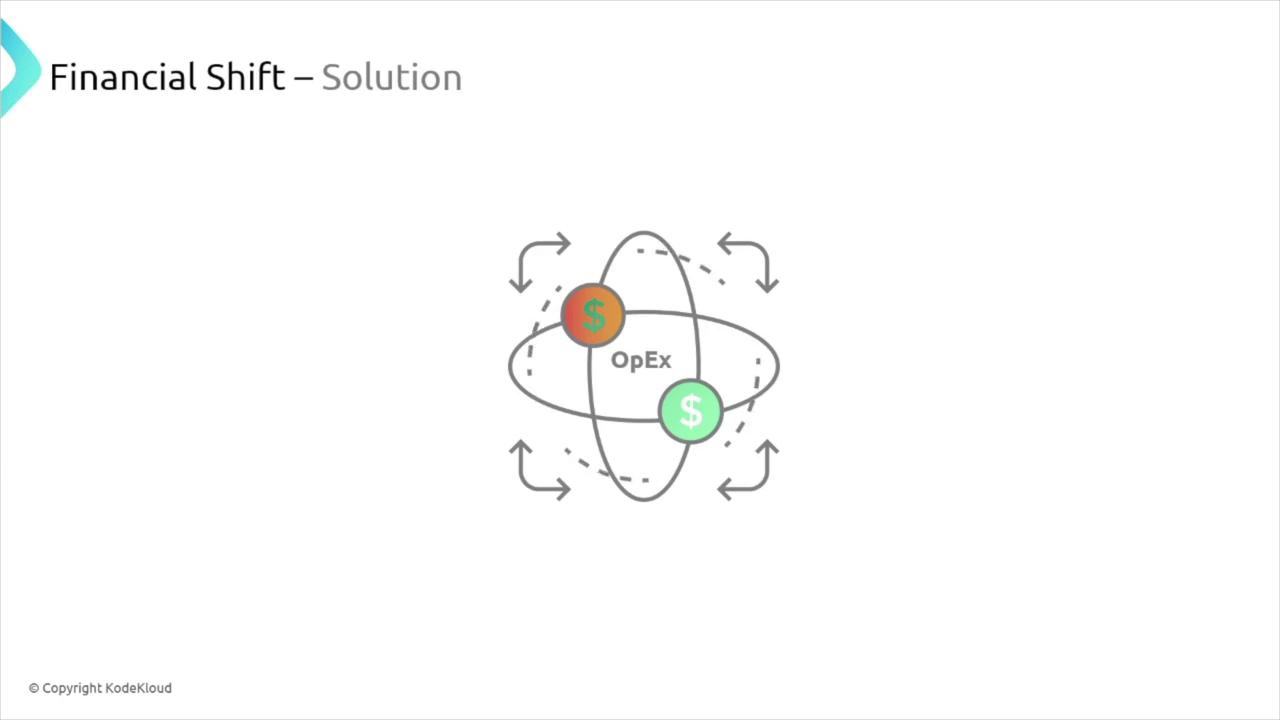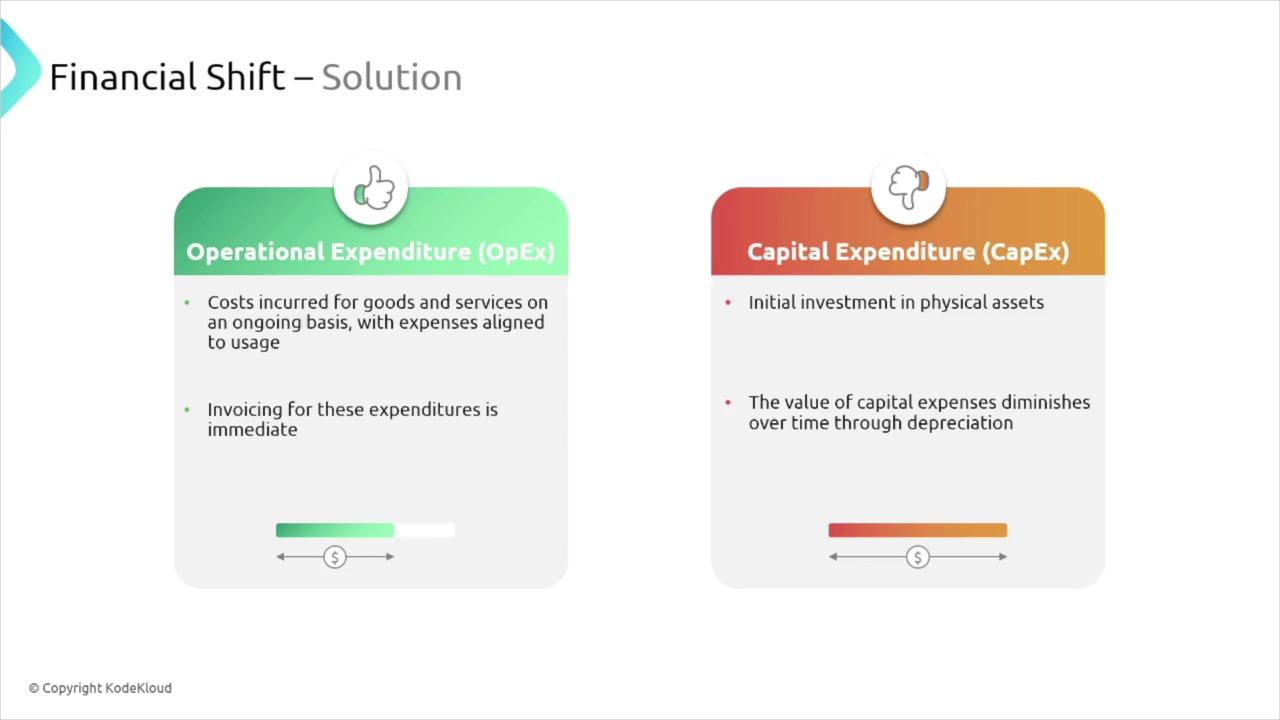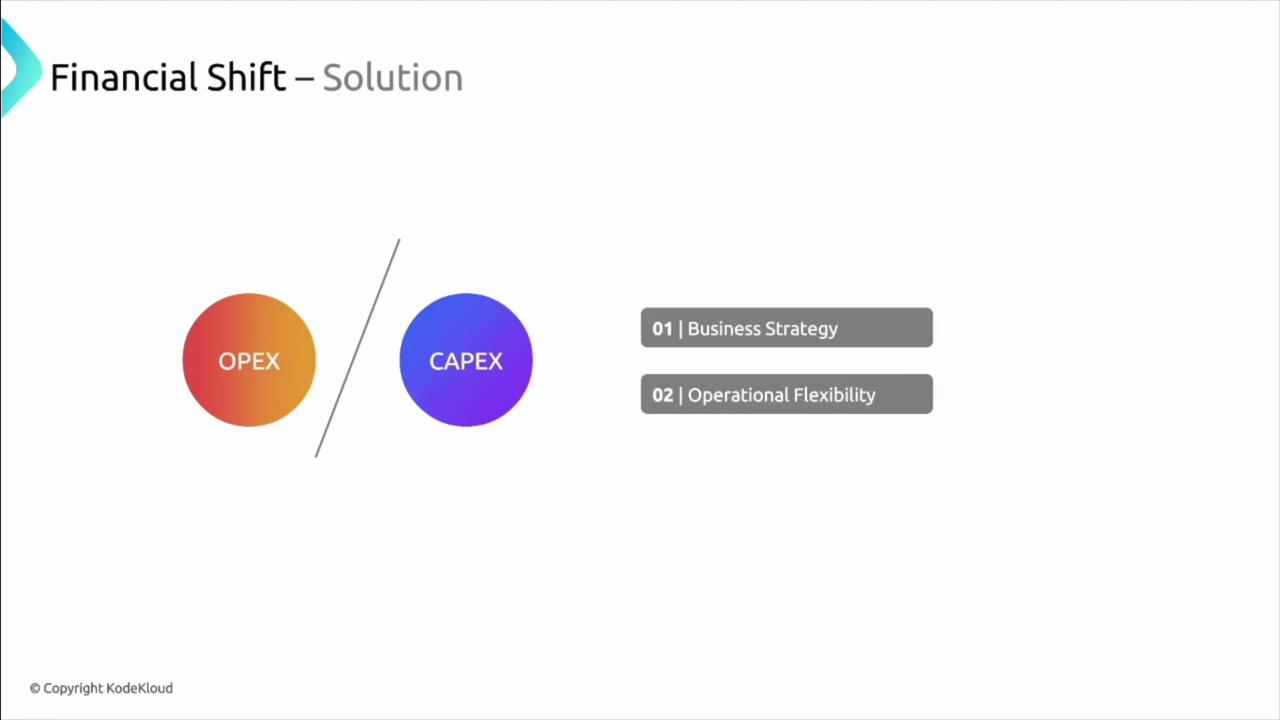AZ900: Microsoft Azure Fundamentals
Cloud Computing
Capital vs Operational Costing
Bella Innovation operates an application that experiences significant seasonal fluctuations. During spring and summer, the application sees a surge in activity, while user numbers drop considerably in autumn and winter. This variation creates challenges when using traditional, upfront hardware investments. Typically, hosting the application has required purchasing servers and making heavy investments in a data center—a classic example of capital expenditure (CAPEX). Although such investments are often justified during peak seasons, they can lead to underutilized servers and wasted resources in off-peak periods.
To address this imbalance, Bella Innovation is considering a shift towards an operational expenditure (OPEX) financial model. This model aligns costs directly with actual usage, meaning you pay only for what is consumed—eliminating the need for large upfront investments and potentially leading to significant cost savings and improved cash flow management.

In this article, we compare two fundamental financial models that are crucial for business planning and strategic decision-making: OPEX and CAPEX.
Understanding OPEX and CAPEX
Operational Expenditure (OPEX) covers the ongoing costs incurred for goods and services consumed during daily operations. These expenses are directly tied to usage—the more you use, the more you pay—and are billed immediately. The flexible, pay-as-you-go nature of OPEX makes it ideal for businesses that need to maintain operational agility without the burden of significant upfront investments.
Capital Expenditure (CAPEX), in contrast, involves large initial investments in physical assets such as servers, data centers, networking equipment, and other infrastructure. These investments provide benefits over an extended period but also depreciate over time. For instance, purchasing a server for $20,000 might see its resale value drop to around $5,000 or $6,000 after a couple of years, which highlights the depreciation inherent in CAPEX.

Note
For businesses looking to modernize their IT infrastructure, balancing OPEX and CAPEX is vital. While CAPEX involves substantial upfront costs and long-term commitments—with potential tax advantages and eventual cost savings—OPEX offers the agility needed in today’s dynamic market.
Balancing Costs in the Era of Cloud Computing
Cloud computing has transformed how businesses approach IT investments. By leveraging cloud services, organizations can avoid heavy CAPEX commitments and adopt an OPEX model that scales with demand. This approach not only improves budget flexibility but also aligns expenses more closely with actual usage patterns.

Adopting the right mix of CAPEX and OPEX can empower companies to optimize their financial operations while maintaining a competitive edge in technology and service delivery. For organizations like Bella Innovation, this strategic balance is essential to efficiently managing seasonal fluctuations and achieving long-term success.
For further insights into financial models and IT infrastructure strategies, consider exploring additional resources on Cloud Computing Strategies and Financial Planning for IT.
Watch Video
Watch video content